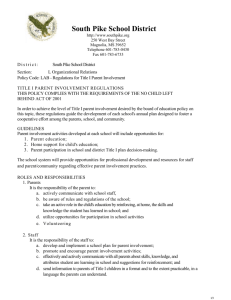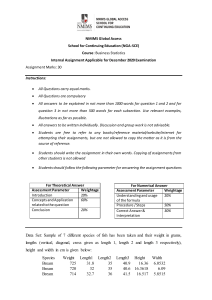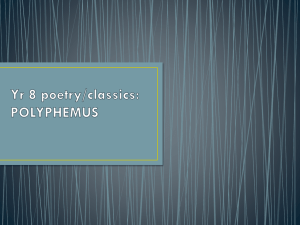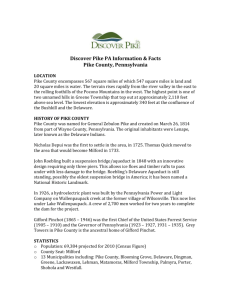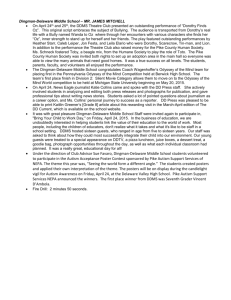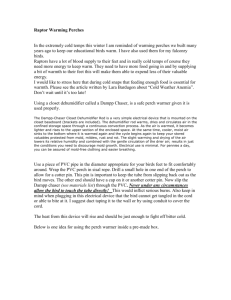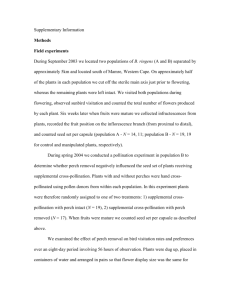E243cs Freshwater Food Chain Mobile
advertisement
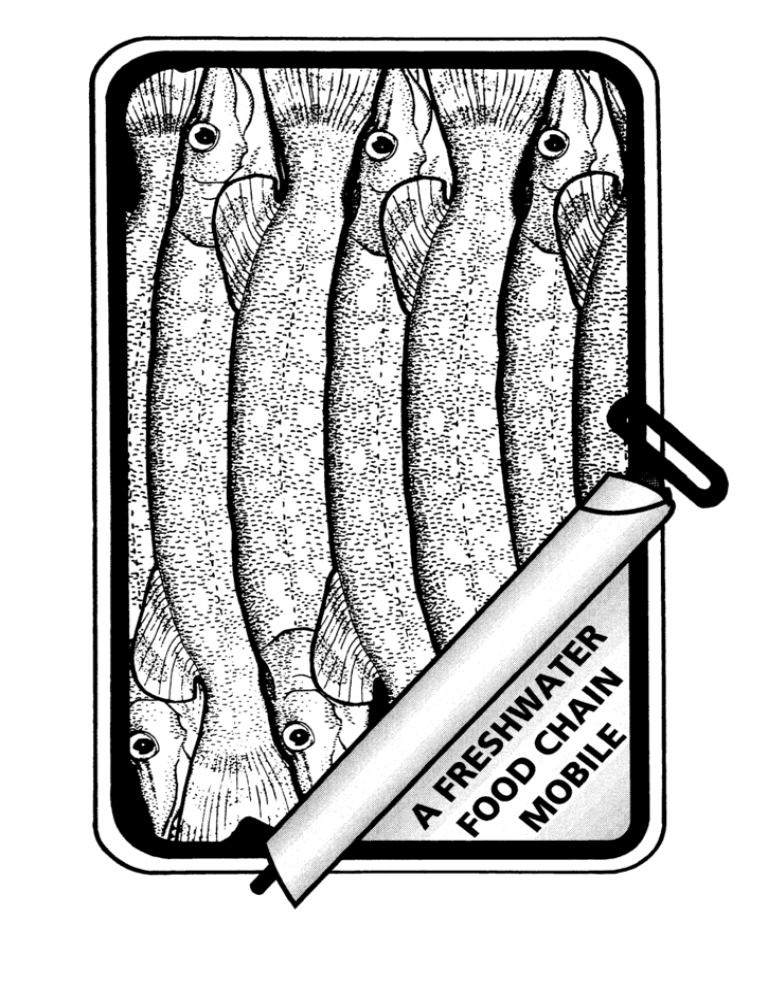
E243cs Freshwater Food Chain Mobile (Colour version) Contents 1. Page Background notes .............................................................................................................. 1 1.1 Phytoplankton .......................................................................................................... 2 1.2 Daphnia (Water flea) ............................................................................................... 2 1.2 Cyclops ...................................................................................................................... 3 1.3 Phantom midge ........................................................................................................ 3 1.4 Roach ......................................................................................................................... 4 1.5 Stickleback ................................................................................................................ 4 1.6 Perch .......................................................................................................................... 5 1.7 Pike ............................................................................................................................ 5 2. References for further reading ......................................................................................... 6 3. Instructions for construction ............................................................................................ 7 4. Freshwater food chain organisms ................................................................................... 9 5. Freshwater food chain mobile cut-out pictures .......................................................... 11 Acknowledgements This guide was originally published by the ILEA Centre for Life Studies. Following the closure of the Centre, CLEAPSS has been able to acquire the copyright of all the CLS publications. Original design and artwork by Bernice Holloway, now working at Sir Henry Floyd Grammar School. Strictly Confidential Circulate to members and associates only As with all CLEAPSS materials, members and associates are free to copy all or part of this guide for use in their own establishments. © CLEAPSS® 2005 CLEAPSS® The Gardiner Building Brunel Science Park Uxbridge UB8 3PQ Tel: 01895 251496 Fax: 01895 814372 E-mail: science@cleapss.org.uk Web site: www.cleapss.org.uk BACKGROUND NOTES This mobile shows one way in which organisms in a freshwater stream might be linked together by their feeding habits. In a typical stream there would be many other organisms as well and feeding links would be much more complicated. All the organisms here together form FOOD CHAINS, which are themselves linked into FOOD WEBS. A complete food web is as follows, although not every food chain is used in the mobile. PHANTOM MIDGE PHYTOPLANKTON DAPHNIA and CYCLOPS ROACH STICKLEBACK PIKE PERCH There are several food chains within the web, eg, PHYTOPLANKTON DAPHNIA PHANTOM MIDGE ROACH PIKE or PHYTOPLANKTON CYCLOPS STICKLEBACK PERCH PIKE All of them begin with the phytoplankton and end with the top carnivore - pike - which is not eaten by any other aquatic animal. 1 PHYTOPLANKTON Everything in the food web depends on microscopic single-celled plants or larger algae which together form the phytoplankton floating in the water. These organisms take in carbon dioxide, minerals and water and, using the energy from the Sun which they trap with their green chlorophyll pigment, make their own foods. Thus they are called the PRODUCERS. They are a source of food for animals feeding directly on them (HERBIVORES) and also indirectly support the populations of CARNIVORES which feed on the herbivores. Without the energy input from the phytoplankton, no food chain or web could survive for long. DAPHNIA (Water flea) There are many different types of water flea, Daphnia is just one of them. They all belong to the class CRUSTACEA, which in turn is a group within the much larger collection of animals - the phylum ARTHROPODA. All arthropods have jointed limbs on all or some of the segments of the body. Crustaceans have two pairs of antennae in front of the mouth and then small limbs modified for feeding around and behind the mouth. In Daphnia the first antenna is very small and serves as a sense organ. The second antennae are much larger and are used to move the animal through the water in a series of hops (hence ‘water fleas’). The main body of the Daphnia is enclosed in a kind of shell and within it can be seen leaf-like pairs of legs. These beat together to draw a current of water into the valves of the shell. This brings in oxygen (which is extracted mainly by the limbs) but also small particles of food - the phytoplankton. These are filtered out by the legs and passed forward to the mouth. The gut is easily seen through the transparent shell, passing from mouth to anus. Just behind it is the small heart which beats about 150 times per minute, pumping blood round the body. The brood pouch containing eggs is also clear. Water fleas are between 1 and 3 mm long and live from a few weeks to six months. They exist in very large numbers and are the food of young stages of insects and small fish. 2 CYCLOPS These are small crustaceans (about 2-4 mm) like the water fleas but belong to a group called COPEPODS. They have two pairs of antennae and the body is divided into segments. Special features which distinguish them include the small single eye at the top of the head, the large head and the main part of the body (thorax) fused together and the thinner abdomen sticking out behind with its two large trailing limbs. In female Cyclops the two large masses of eggs in the egg sacs on either side of the abdomen are very obvious. Cyclops swims slowly with its antennae but can move faster with jerks by using limbs concealed underneath on the thorax. Little is known about its feeding but it does not ‘filter feed’ like the water fleas. Food particles are captured by limbs round the mouth and these are likely to be the larger forms of algae. Cyclops has been seen to eat the dead bodies of other animals, so it is really an omnivore, taking plant and animal foods. PHANTOM MIDGE This is the aquatic larval stage of an adult insect - the phantom midge - which is closely related to the blood-sucking mosquitoes, although the phantom midges do not bite. Because the larvae live in water, the adults are never found far from ponds and the slow-flowing, backwaters of streams. The phantom midge larva, (its actual name is Chaoborus), is a carnivore with prehensile antennae which seize its prey - particularly water fleas and copepods - but it also eats other aquatic insects. The body is transparent, about 10 mm long and the only obvious structures are the black eyes on the head and two pairs of air sacs. The midge larvae lie motionless, suspended horizontally in the water. At the end of the body is a stiff comb of hairs called the rudder, a pair of hooks and a group of gill-like limbs. 3 ROACH This fish belongs to the Carp family; (its actual name is Rutilis rutilis). Its maximum size is about 45 cm. The young roach feeds on water fleas and copepods and, as it grows larger, it feeds on many aquatic insect stages but particularly the midge larvae. Typical features of the roach include fins without a series of spines in them, a single dorsal fin on top of the body and no teeth in its jaws. (It does, however, have a set of teeth on paired bones at the back of the throat to help it crush its food.) The roach can withstand relatively low levels of oxygen in the water and thus can survive in slow-flowing or stagnant backwaters of streams where oxygen levels can fall markedly in hot weather. It is, however, here that there is usually an abundance of their food species which are not seen so often in faster-flowing parts of streams. STICKLEBACK There are in fact two types of freshwater stickleback, the 3 and 9-spined species. The 3-spined stickleback (Gasterosteus aculetus) is much more likely to be found than its 9-spined relative, as it prefers to swim in more open waters and is therefore more easily seen. It is about 5 cm long with two longer, and one shorter, spines on its top, dorsal surface, (the lower pelvic fins also have a long, sharp spine each side). In the breeding season, the lower surface of the male’s body becomes a deep red colour. The spines can be lowered or raised and serve as a deterrent to would-be predators. Nevertheless pike, large perch and other large predators do eat them. The sticklebacks themselves feed on a wide variety of animals including water fleas and copepods. The 3-spined stickleback is a territorial animal and unusual in that it is the male that provides shelter and protection for the eggs and young. The male builds a nest in a pit he excavates, bringing in fragments of vegetation and sticking them together with a ‘glue’ made by the kidneys. He makes a tunnel in the nest mound and then goes off in search of a receptive female which he entices to the nest by means of a zig-zag dance. The female enters the nest and is prodded by the male to induce her to lay eggs there. Once she has spawned, the female is chased away by the male. The male immediately enters the nest to fertilise the eggs. Between 300 and 1000 eggs may be laid in the nest by several females. The male now fans the nest with his fins to bring fresh currents of water and dissolved oxygen through the nest. As the eggs hatch and the young develop, the male chases off intruders and prevents his offspring from straying too far by gathering them up in his mouth and spitting them back into the nest pit. 4 PERCH The perch (Perca fluviatilis) is easy to identify. It has broad black stripes on its back with a greenish colouring of the upper sides of its body and bright orange fins below the body. There are fourteen or so strong, sharp spines in the upper dorsal fin which are held erect when the fish is attacked. The perch is a predator from the moment it hatches as a 10 - 20 mm long fry. Then it feeds on newly-hatched copepod crustaceans. As it grows it will feed on larger Cyclops and take larger crustaceans such as freshwater shrimps. By the beginning of its second year it will have reached 10 cm in length and now preys on young fish including other perch. When fully grown, it will take quite a large fish; the stickleback’s spines are a deterrent but it does fall prey to the perch. The female may spawn up to 200,000 eggs in a lace-like stream tangled round weeds. Two or three males jockey for position in an attempt to shed their sperm on the eggs. Male perch live for 6 - 7 years, but the females can survive for up to 10 - 12 years. A five-year old fish may be about 28 cm long; the largest perch may, however, grow to about 35 cm. PIKE The Pike (Esox lucius) is a most aggressive and voracious feeder. It has an unmistakable torpedo -like shape, large jaws with needle-sharp teeth which point backwards to prevent prey escaping, and its dappled body is well camouflaged so that it can lurk undetected among weeds until it lunges out on its prey. It uses its huge paddle-like tail end (where all its propelling fins are positioned) to make its lightning charge. It has a groove, rather like a gunsight, on its snout in front of each eye which helps its forward vision. When first hatched, a pike takes small crustacea and insect larvae but soon it has grown sufficiently to take small fish. When fully grown it eats active, swimming fish especially roach, perch, dace and trout, but it also eats numbers of sticklebacks if available. Large pike extend their diet beyond fish and are known to eat water voles, ducklings, and even adult mallards. There have been reports of attacks on dogs; an alsatian swimming in the River Lea was seized by the tail! Large pike are now less common than they were 50 years ago; (they can grow up to 1.5 m! - a good-sized male may weigh about 6 kg whereas females are generally much bigger, eg, weighing between 17 and 22 kg). It seems that more anglers are now catching them, they are being killed off in fishery management schemes and pollution has hit them hard. Pike tend to live until they are about 15 years old, though 18 years has been recorded. 5 REFERENCES FOR FURTHER READING* (Useful for colour pictures of organisms) Clue Book of Freshwater Animals G. Allen & J. Denslow, Oxford University Press Collins Guide to the Freshwater Fishes of Britain and Europe B. Muus & P. Dahlstrom, Collins Observer’s Book of Pond Life J. Clegg, Warne Look Closer: River Life Dorling Kindersley Look Closer: Pond Life Dorling Kindersley * Note: This list was compiled when the food-chain mobile was developed by the ILEA Centre for Life Studies in the 1980’s. Many of the titles will now be out of print but may be obtained from libraries or equivalent, currently-available materials substituted. 6 INSTRUCTIONS FOR CONSTRUCTION 1. Print out all the organisms on the accompanying sheets onto card using a colour printer and then cut them out. You will find that for each copy of an organism, there is another ‘reverse image’ copy. It is sensible to use the pike as a template to cut out another pike ‘shape’ on a piece of thick card. This is then stuck between the two pike cut-outs to strengthen the construction, since all the other organisms hang from this and otherwise it might bend. Alternatively, if a laminator is available, this might be used to strengthen and protect each organism in the food chain after you have completed step 2. 2. Using a strong paper adhesive (eg, rubber cement such as ‘Fixogum’), stick the two ‘halves’ of each organism together. 3. When the adhesive has dried thoroughly, pierce holes through the positions marked on the organism cut-outs. 4. Cut appropriate lengths of fine, nylon thread (‘fishing line’ is recommended) or cotton thread to join the organisms together into the food chain mobile. Refer to the illustration of the complete mobile for the relative lengths of each piece of thread. 5. Push the thread through the holes in the organisms and tie a tight knot for each hanging point. Join the organisms together in the sequence shown on the accompanying diagram with the pike at the top of the food chain. (The illustrations of the organisms used in the mobile (page 9) can be laminated and placed on a wall, adjacent to the mobile, to identify the organisms.) 7 8 9 This page has been deliberately left blank. 10 11 12 13 14 15 16
